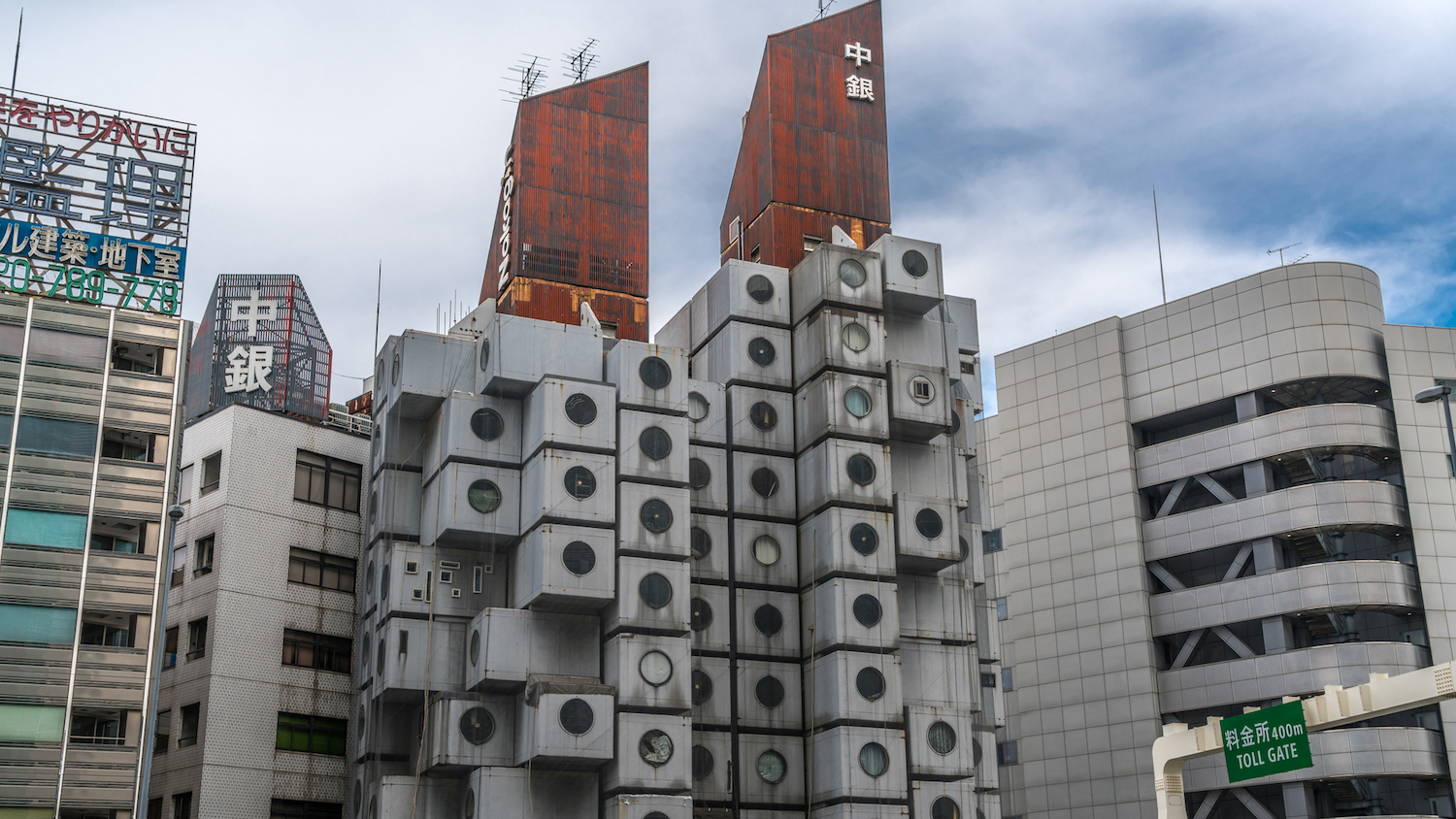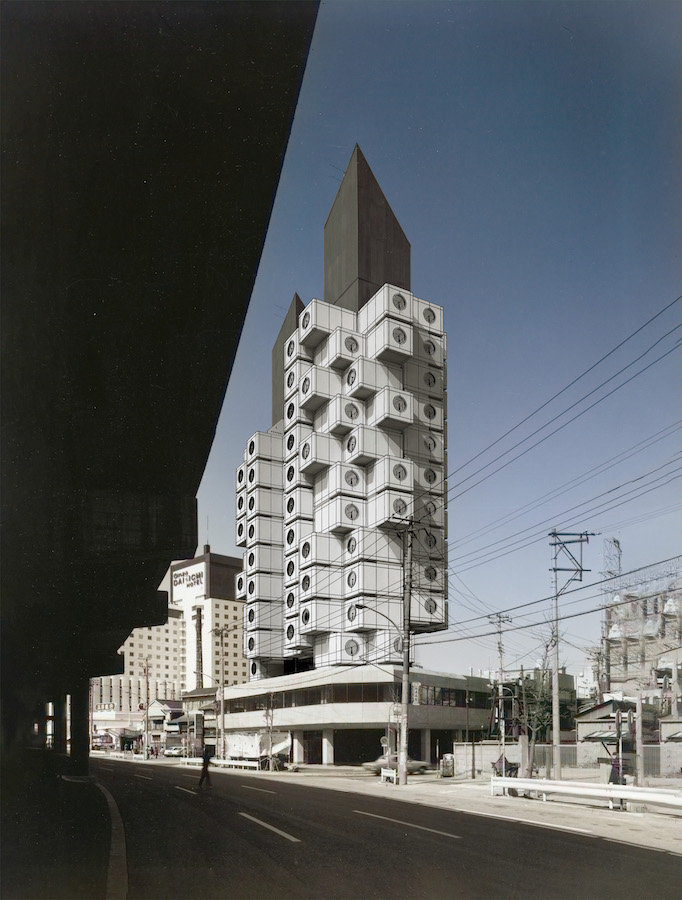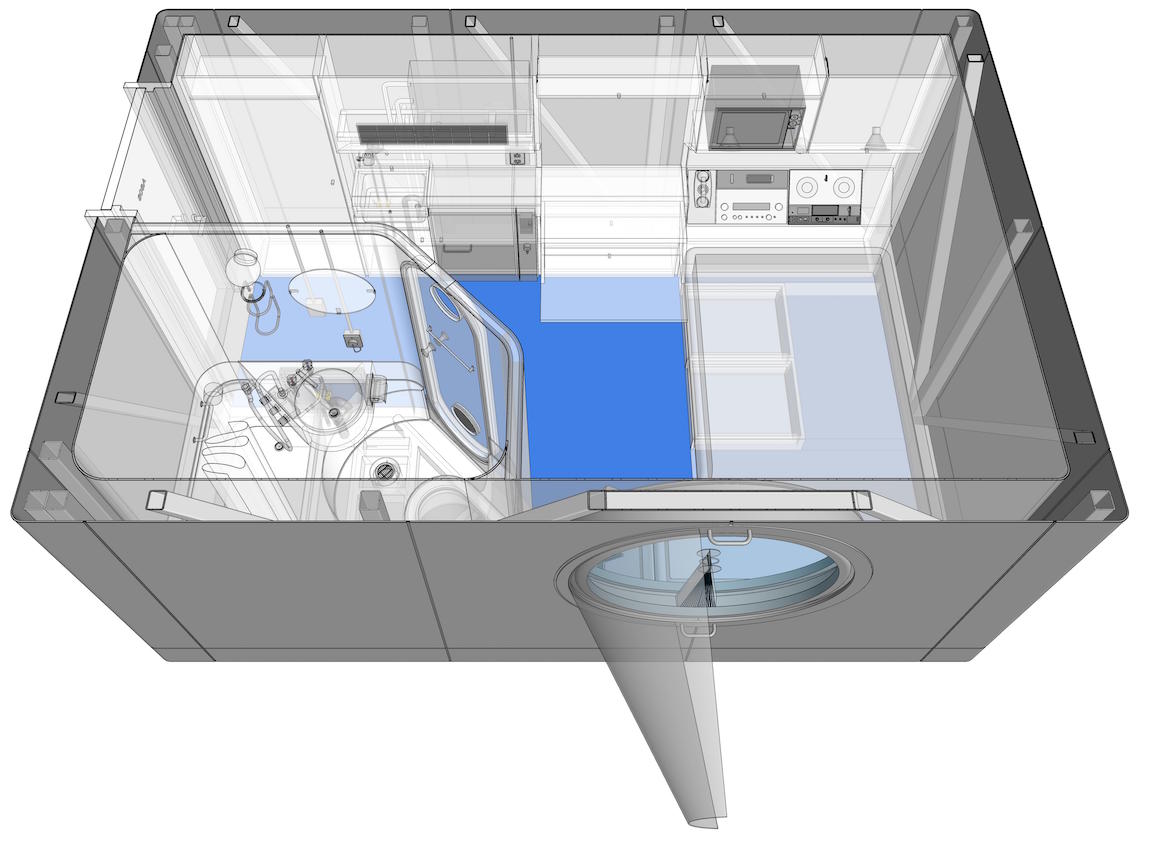
The Nakagin Capsule Tower is a landmark of the post-war Japanese Metabolism architectural movement. Designed by Kisho Kurokawa, one of the founders of Metabolism, the tower was built in 30 days in 1972. It featured 140 capsules – mini pied-a-terres – for the so-called salarymen (company-loyal white collar workers) of Tokyo.
Having fallen into disuse and disrepair, it is being demolished. But the design will live on, in the real world and the metaverse, thanks in no small part to the work of a team from BDP.
The Nakagin Capsule Tower comprised two connected concrete towers, one of 11 storeys and the other of 13. The 140 self-contained prefabricated capsules were attached to these.
Over time, the building lost relevance and, ergo, tenants. Age and asbestos issues set in. Demolition was first considered in 2006: proposed renovation plans at the time proved too costly.
Supposedly, there were just 20 tenants by November 2021. After much debate, demolition work finally started in April this year.
Keeping it alive
But Kurokawa’s practice and property investor, Laetoli Corporation, will keep the building alive. It is selling the right to reconstruct the tower both in reality and virtually as non-fungible tokens (NFTs). To do that, they needed a digital model – and that’s where BDP came in. Chief information officer Alistair Kell takes up the story.
“BDP and Kisho Kurokawa Architect and Associates (KKAA) are part of the same company: Nippon Koei. We’d been lending digital support to Nippon Koei, and because of that experience, they approached us when the Nagakin project came up to create a model of the tower itself.”

Modelling of the architecture, structure and MEP were progressed in Revit. BIM360 was used for model viewing and commenting between Tokyo and the UK.
Kell reveals more detail of the challenge: “They provided us with circa 70 record drawings – all 50 years old, best described at scheme design level with all the text in Japanese.
“The model is as much about what the building was, what it stood for, and the way it was inhabited. So we set out by looking for as much historic information as we could find. And because of the building’s reputation, there was plenty out there. We were able to get photos from a range of locations in magazines, but of more value were record photographs during construction.”
Also of value to Kell and his three-strong Nakagin team at BDP were YouTube videos from architects visiting the building.
Modelling the capsules
There was no need to individually model each of the 140 capsules. In reality, there were eight design variants that BDP “produced detailed models for FF&E, MEP and architecture – and that gave us the primary modules to build from,” Kell explains.
Over the course of a few weeks, the model was reviewed and updated. “We started in May; modelling was probably six weeks of architecture and two weeks of M&E. We’ve gone through various iterations, concluding in late summer,” Kell says.
The BDP team took the model through about a dozen iterations as they met a not-unexpected challenge. Kell says: “If you compare the record drawings with photographs and videos, you find buildability changes were made. We had to make sure that we were communicating the changes, and that they were understood and accepted by Kurokawa architects.

“Some of the discussion ended up being around things like the structural frame for the capsules. The drawing suggested one thing and then record photographs of fabrication clearly showed something else. Another related to the privacy screens and blinds on some of the windows: understanding and agreeing the actual installed locations, rather than what was identified on the original drawings, took a little bit of time. We were trying to get the character of the building as accurate, as correct as it could be before demolition was completed.”
Not a normal job
Highlighting that this was not a normal job, some of the modelling was specifically for the metaverse. Kell says: “A lot of the FF&E is modelled to locations with a parameter that you can turn on and off, allowing you to have them open or closed. Equally, the lifts were all modelled in such a way that on every floor level, you can turn the car on or off so that it’ll help to get up to the next stage.”
Looking back on the project, he reflects: “To be able to have some involvement in a building as iconic as the capsule tower in this way is an interesting venture for everyone involved and for BDP.”
Kell suggests the project could set a precedent and alter the future of historic buildings, and the public’s relationship with them. “There’s a lot to be explored as a result. Will we see the emergence of collectors of historic buildings?” he says.
What do I get if I buy the NFTs?
There are two NFTs of the Nakagin Capsule Tower for sale. One is for the metaverse and the other for the real world. There is a clear intent for this to not be just about recreating the building: it’s about the ethos behind the design having a second life too.
Metaverse NFT
Metabolism 101
Metabolism was the post-war Japanese architectural movement that combined architectural megastructures with ideas of organic biological growth.
Joining Kisho Kurokawa in launching the metabolism manifesto in 1960 were Kiyonori Kikutake (best known for his Marine City proposal in 1958) and Fumihiko Maki (best known most recently for designing the new Tower 4 at the new World Trade Center); the movement’s patron was Kenzo Tange.
The opening statement of the movement’s manifesto read: “Metabolism is the name of the group, in which each member proposes further designs of our coming world through his concrete designs and illustrations. We regard human society as a vital process – a continuous development from atom to nebula.
“The reason why we use such a biological word, metabolism, is that we believe design and technology should be a denotation of human society. We are not going to accept metabolism as a natural process, but try to encourage active metabolic development of our society through our proposals.”
The Nakagin Capsule Tower and the Kyoto International Conference Center are commonly held to be the high watermarks of the movement.
This gives one person (one company) in the world the right to not only recreate the tower, but to rent or sell it to others. Although the tower was initially sold as a residential condominium, there are no restrictions on how it can be used. So new applications and communities can be created by optimising the design. For example:
- reproducing the tower as digital art in the metaverse;
- collaboration with various artists, such as colouring the tower;
- customisation of the capsule itself; and
- new business development using the capsule.
Real world NFT
By using the 3D models, developers and contractors can build the Nakagin Capsule Tower in real space, and lease or sell it to others. In the reconstruction, KKAA will provide the necessary cooperation (under separate contract) to reconstruct the tower in accordance with the laws and regulations of each country around the world.
According to the initial sales literature, a range of businesses can be developed in today’s society using metabolism architecture. For example
- reproduction of the tower in a city facing the problem of population overcrowding;
- development, construction and sale of new towers by freely combining capsules;
- in the event of a disaster, the capsules can be transported to the disaster area and used as temporary housing; and
- resort business that moves capsules to the best area depending on the season.
The two NFTs were initially to be sold old via the OpenSea platform, one of the largest NFT sites. But BIMplus understands that another sales platform is due to be announced.
Don’t miss out on BIM and digital construction news: sign up to receive the BIMplus newsletter.














